Listening to a good baseball game on the radio is like soul food for my ears. As a numbers guy, I find myself oftentimes looking up statistics from players and teams while I’ve tuned in. My brain will run statistical scenarios on current players to see how they may stack up against our heroes of the past. Doing this got me to thinking how in tune we are to the game and its players, and how card collecting helps bridge the gap from being a fan to feeling truly connected.
On September 1st, Justin Verlander pitched a no-hitter. I heard about the game in progress from mlb.com, so I quickly tuned in with baby Beckett on my lap, and we watched it pitch by pitch together until we pumped our fists in the air right along with JV on the screen.
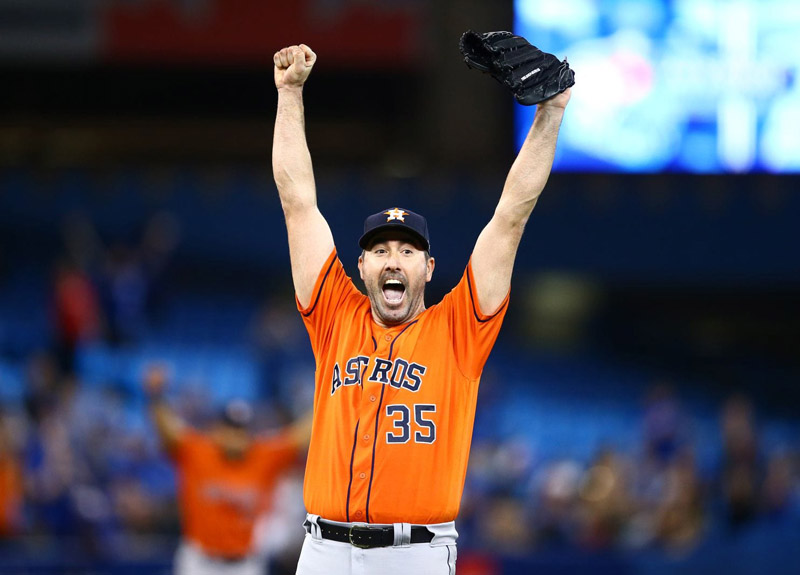
I’ve wanted a Verlander rookie refractor auto for a while, and this tipped me over the edge. With Houston on a collision course with the postseason, I figured they may never be cheaper. While the game was in progress, I surfed eBay and found the right one, while picking up another “right one” later that afternoon. Just like that, I had an even more of a personal connection with the man I just saw pitch a no-no for my home team by means of owning a couple notable rookie cards with his signature. All with a few clicks of the button, I was brought closer to the player, the team and the game. The acquisitions made his no-hitter go from something intangible to feeling like I had ownership in it somehow.
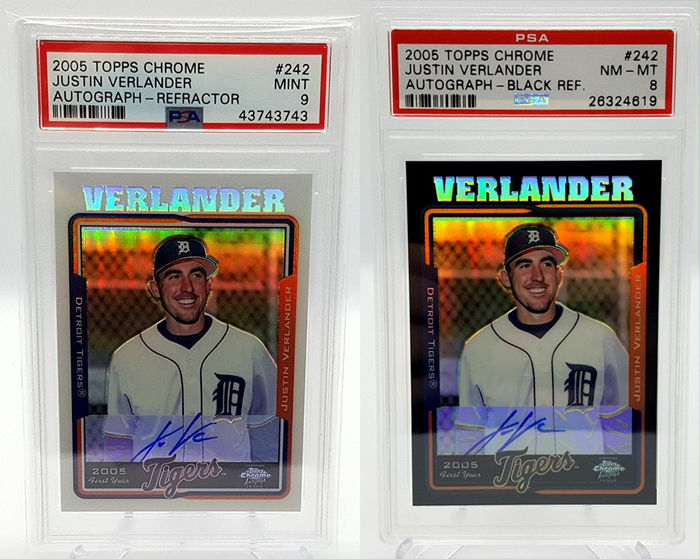
Thanks to the Internet, we have loads of crystal clear images and video to relive the virtually any moment that happens in baseball nowadays. Social media allows for these images and videos to be shared all over the place, with tons of interaction among people from all walks of life … instantly! Heck, Topps even made a baseball card the very next day commemorating the feat, selling nearly 2,500 copies, with the 1/1 selling for $1,500. When I was younger, if you wanted a new Topps card, you would have to wait until the next season. Remember the 1990 Topps 5000 K Nolan Ryan Tribute cards? What a difference 30 years makes!
I also decided to make my own fun custom, with a comic book feel, and had a blast doing it! Not for really any reason other than to celebrate the occasion and try out a comic book style. When I was done, I tweeted it out to both Verlander and the Mrs. It still boggles my mind that there is an avenue to interact with the players like this.
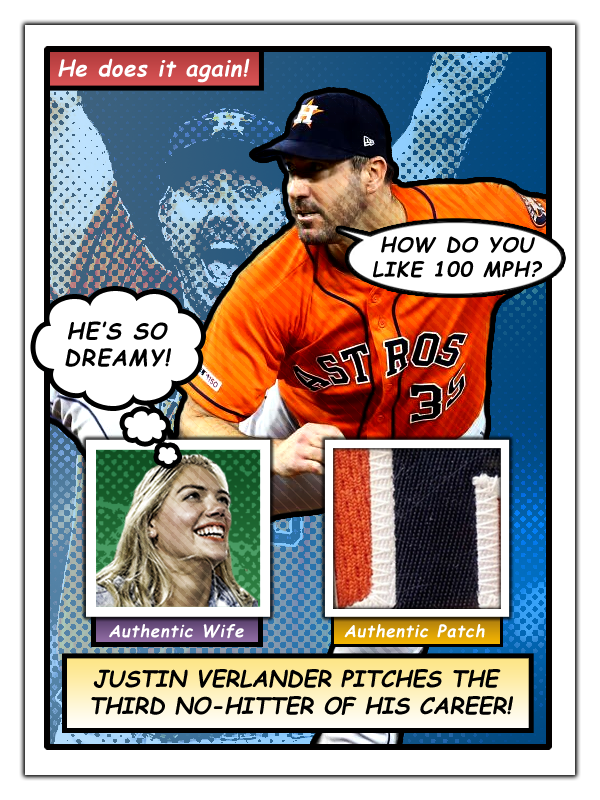
There has been no other time in the history of our storied game, that fans and collectors have been able to become so totally immersed and connected to any facet of baseball, so quickly. Heck, if one wanted to, they could likely setup a hangout at their favorite player’s house and have him sign and wear all kinds of jerseys, but only a crazy person would do that…right?
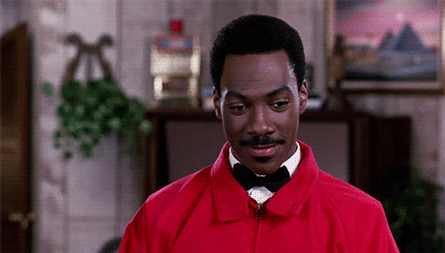
(Yes. The answer is yes.)
With as great as Verlander is, this article isn’t about him. There are literally thousands of baseball players that we can seek out to follow and collect, along with a million ways to do so – unlike my childhood, it is virtually impossible to exhaust the options we have collecting any given player – the variety of cards is simply astounding! Trout, Acuna, Bellinger, Yelich … all of these guys are in the spotlight, yet, they are merely a tiny thread in the awe-inspiring tapestry of our favorite game. A thin shell that covers an incredibly rich world of baseball history…yet *very* few people in the hobby seem to know it.
As I have become a student of early baseball and baseball card history over the past year, I am amazed at how little recognition today’s average collector gives 19th century baseball. Many are even astounded to hear that baseball cards from the 19th century exist, thinking that perhaps an Honus Wagner, Babe Ruth or Mickey Mantle were the first cards to have been made. It is definitely fun to be able to talk to these folks about 19th century baseball and baseball cards. To them, showing 19th century baseball card may just as well be the Declaration of Independence, or some rare, ancient relic. Heck, I still feel the same way!

With as head over heals in love as I am with this time period in baseball card collecting, I have found myself interested in a time when baseball was wildly popular, yet had no baseball cards readily available for fans. A time when the first baseball cards from Old Judge and Allen & Ginter didn’t yet exist.
Before baseball cards largely existed, there were woodcuts.
What is a woodcut?
Prior to 1890, publications such as Harper’s Weekly and Leslie’s Illustrated did not include photographs, because the capability simply wasn’t there to mass-produce them. Instead, they would use what were called woodcuts for their illustrations. In its simplest form, a woodcut is a block of wood, with a picture engraved in it by hand. Ink is then applied to the engraving, and, when pressed on paper, the image shows up. Think of it almost as a rubber stamp … but … wood. This method has been used for several centuries.
Artists/engravers would work on illustrations for mass production to tell a story through pictures, such as this one below regarding the Salem Witch Trials.

As time went on, the art became more sophisticated, and artists were able to create more intricate woodcuts that more accurately depicted what they were trying to portray. This was especially helpful during the Civil War. As you can see, the quality is much, much better.
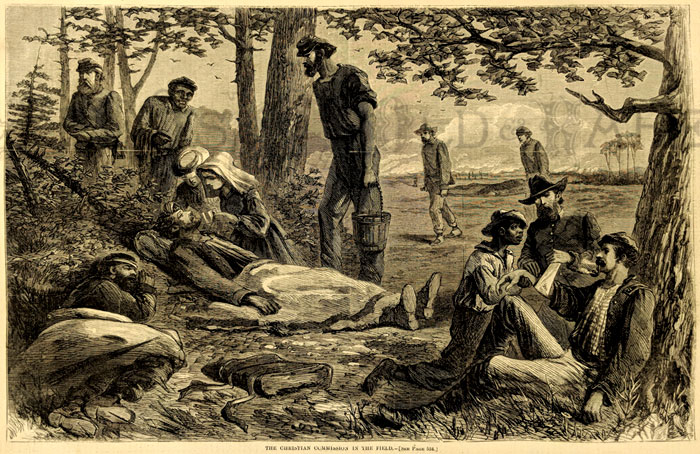
Publications would have artists go down to battlefields, draw what they saw and bring their work to an engraver. The picture would be copied on wood, which would oftentimes be cut into several blocks so several engravers could do the laborious and skillful work at the same time. Once done, the blocks would be put together, ink applied and stamped on however many papers they wanted to. This became a more sophisticated process over time, as they eventually figured a way to develop a photograph directly on the wood, and use that to engrave on instead of trying to copy an artists work by hand on the wood block.
By the end of the Civil War in 1865, Baseball had already cemented its legacy as our National Pastime. Think about that for a second – that’s over 20 years before the first Allen & Ginter baseball cards were created. Baseball wasn’t just around during this time; it was thriving. In fact, baseball games were even played during the Civil War. One of my favorite baseball anecdotes is the story of Abraham Lincoln in 1861. (Honest Abe enjoyed the game immensely and even played baseball himself!)

It has been said that Lincoln was in the middle of a baseball game when a couple of people ran to him to let him know he had won the presidential election. As the story goes, Lincoln told them he was glad to hear the news, but wanted to make a hit before leaving with them. Best president ever?
Earlier this year, I discovered something truly fascinating. Woodcuts were regularly used to depict star players and entire teams! Fans of baseball would collect these back then, as we collect baseball cards now. Once I heard about this, I knew I had to learn everything I could about them. Diving into what was available is like how it must have felt as a child learning about dinosaurs for the first time.
The woodcut in the background features Chicago’s 1883 team which featured Cap Anson, King Kelly and Billy Sunday, among others.
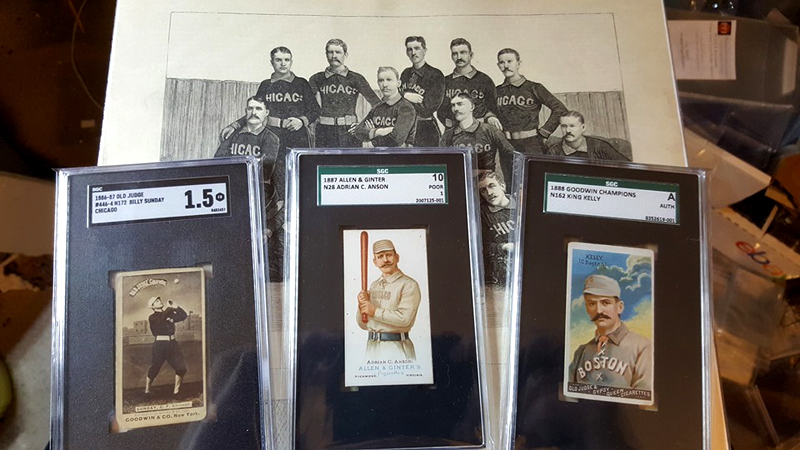
Perhaps the greatest battery of the 19th Century, Hall of Famers Timothy Keefe and Buck Ewing were featured in some publications.
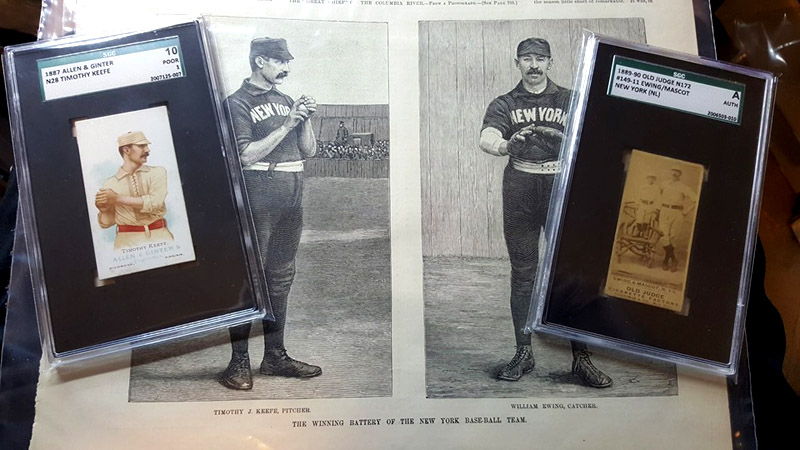
Buck even got a full front page woodcut, which was rare for baseball players.
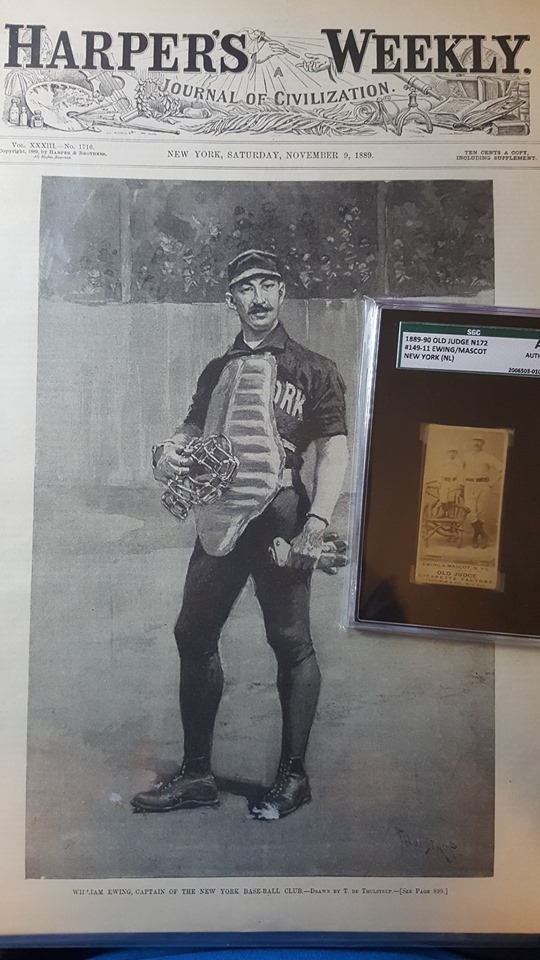
Like the original Allen & Ginter baseball cards, woodcuts hold a strong similarity to original Lithographs that Picasso created which hang in museums today, as they were made by hand or handmade tools. They are original works of art in every sense of the meaning.
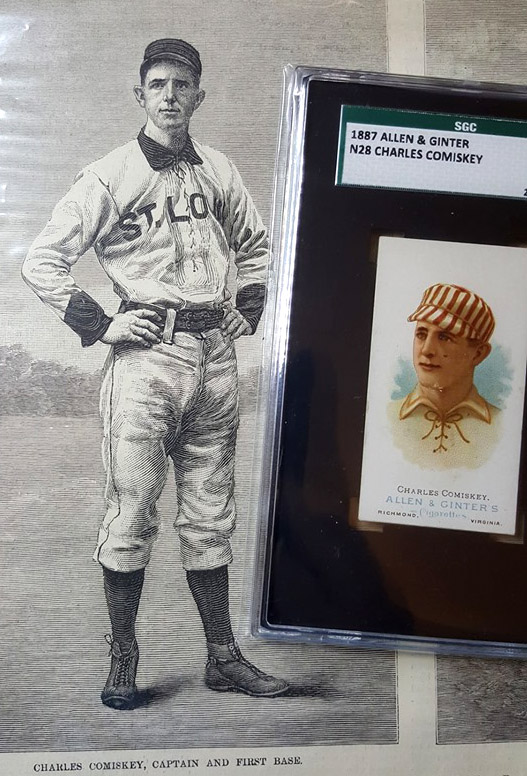
Baseball was thriving, and at times, exhibition games would be played on ice skates. Some even speculated baseball in the future would be played on horseback. The woodcut below is from 1883.
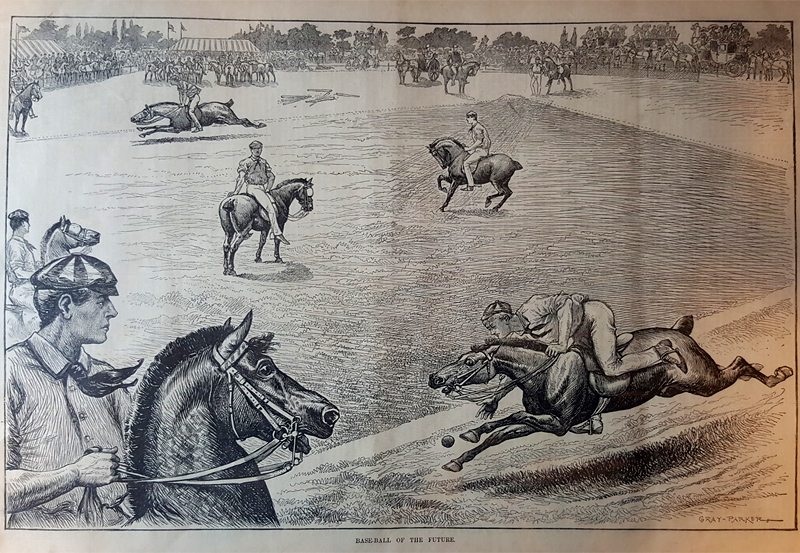
Some of baseball’s most colorful and key characters don’t even have baseball cards, yet are depicted in woodcuts! Like the above woodcuts, the following are pieces from my collection, and I wanted to talk about the fascinating world of life as a baseball fan and collector that has seemingly been lost to time … before there were baseball cards.
This 1882 woodcut features arguably the two biggest baseball stars of the 19th century, Cap Anson (front and center) and King Kelly (just behind Cap, to the left.) It may seem strange to many to see how each player is dressed differently. This was apparently an attempt by Albert Spalding to try and ramp up sales, as more money could be generated by selling different uniforms to each position. I know people didn’t smile for pictures back then, but I can’t help but think the reason they aren’t smiling in this woodcut is because they feel humiliated that they look like they are dressed for the circus. #thanksspalding
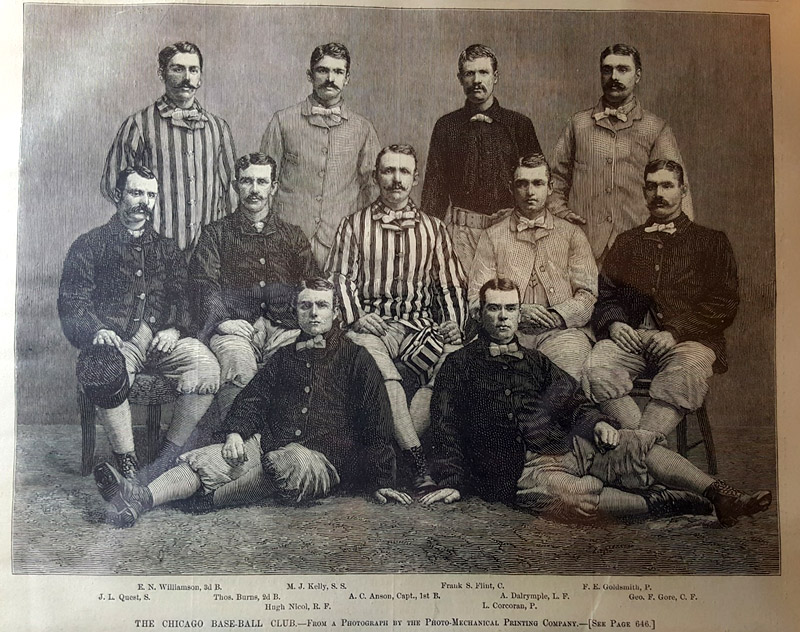
Below, is a woodcut from 1874 (Philadelphia Athletics) and features a few players of interest. First, the player in the upper left actually fought in the Civil War (WHAT?!?) and second, the guy in the bottom right is someone who is more well known.
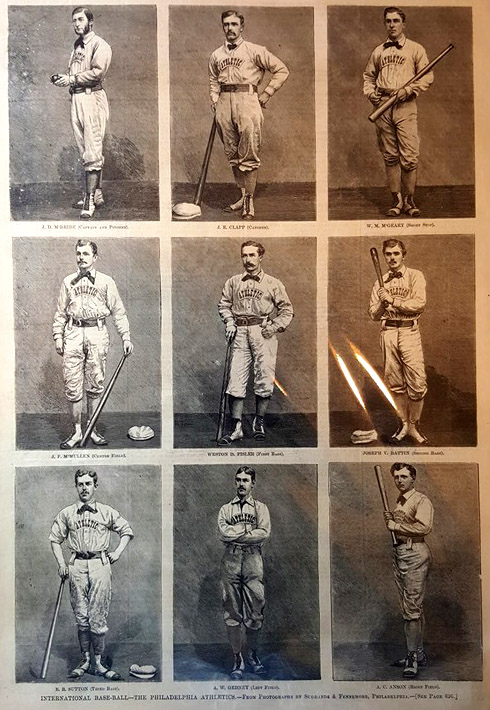
Before he was known to America by the name of “Cap”, Anson’s nickname was Baby. Pictured below is a close up of him from 1874 from the woodcut above, without his signature handlebar moustache.
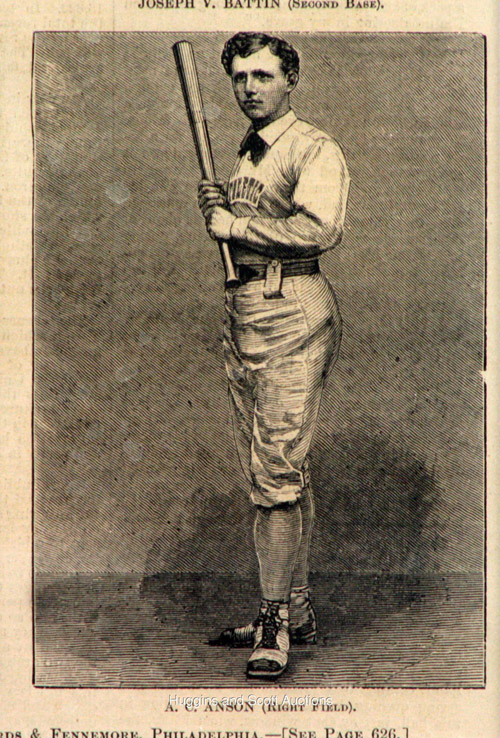
Another piece I love is this 1874 woodcut of the Boston Champions. It is significant for a number of reasons. First, I found out that the gentleman posing sideways is none other than Ross Barnes. Never heard of him? That’s okay, I didn’t either until I did some research. As it turns out, he hit the first home run in professional baseball history. How cool is that? A lot of these guys pictured have very interesting stories behind them. This woodcut also features Albert Spalding as well as George & Harry Wright – true pioneers of our favorite sport! This is baseball royalty.
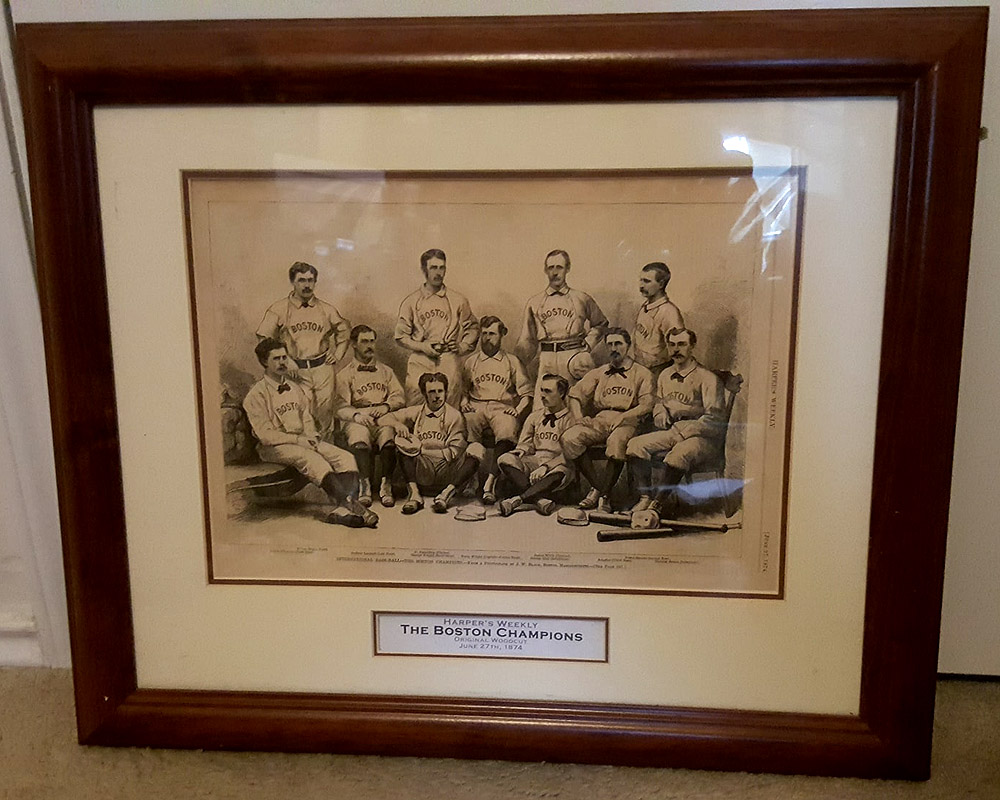
My oldest woodcut is from 1865, the last year of the Civil War. It features the Brooklyn Atlantics – among the players depicted below are many interesting story lines. It should be noted that they were the first sports team ever invited to the White House after having become world champions.
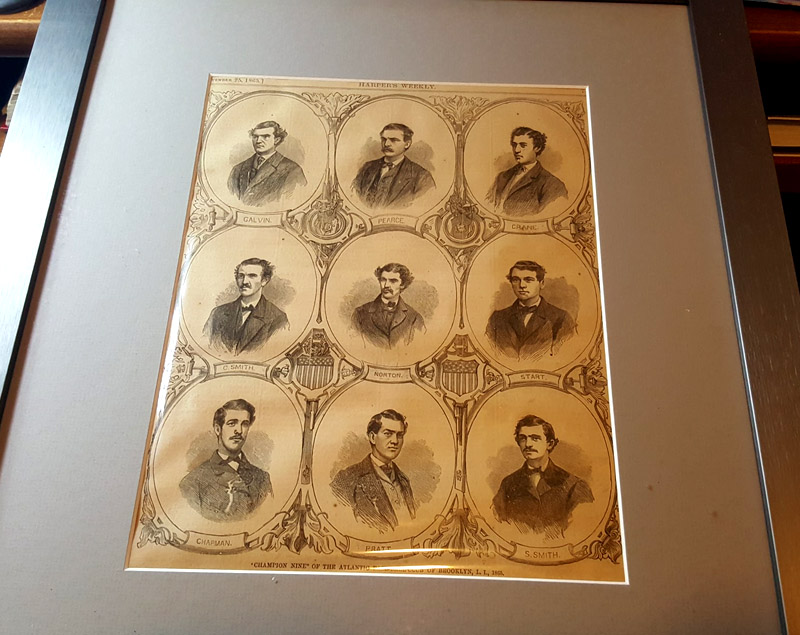
While the woodcut above is my oldest (by a few months) it isn’t my favorite. This is. The holy grail of woodcuts: Frank Leslie’s 1865 Woodcut featuring none other than baseball’s first ever superstar, Jim Creighton at the very top. He was such a big deal, that they created this 3 years after he passed away. If you asked me a year ago if I had ever heard of him, I would have said no, but after doing some research, I learned that he has an incredibly fascinating story.
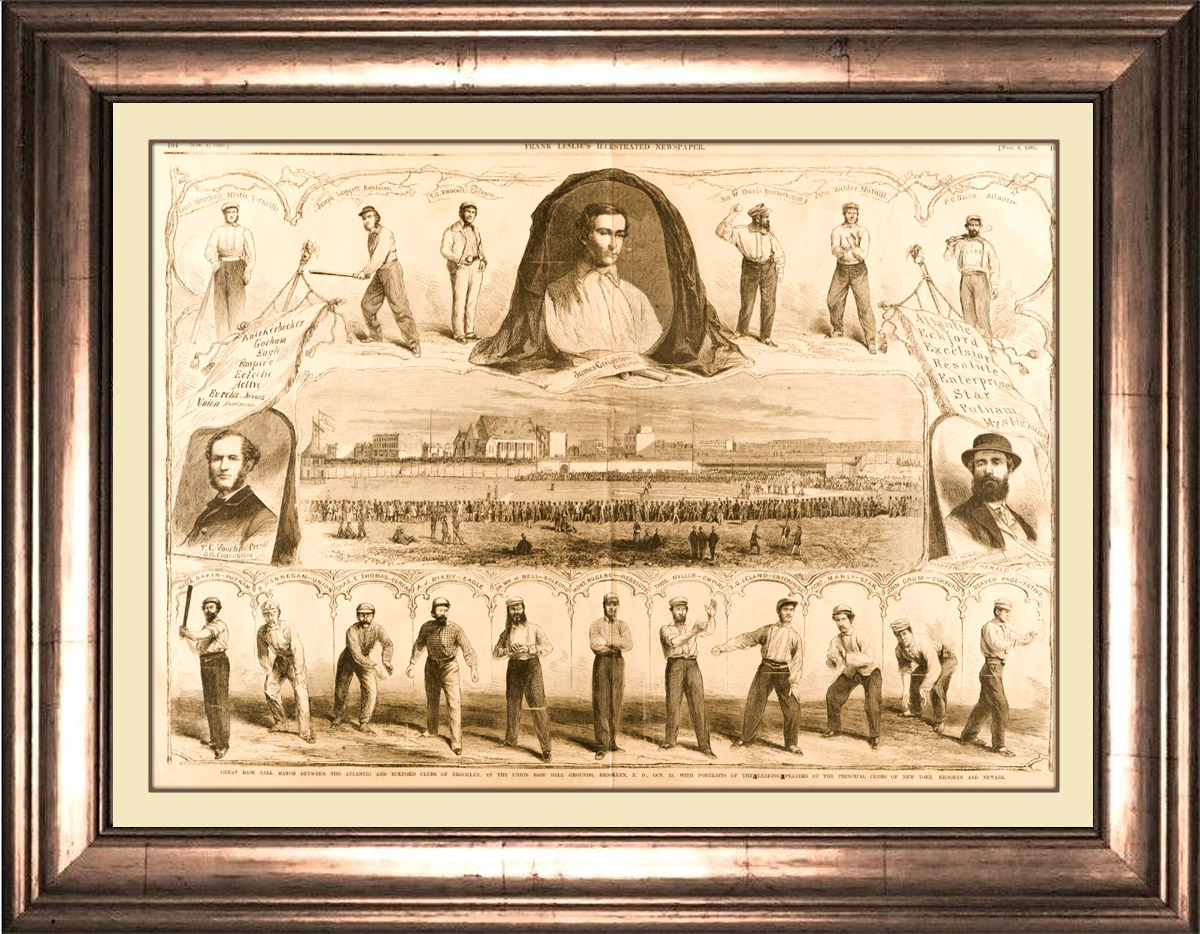
Back then, the game of baseball was played by pitching underhand. In fact, pitchers wouldn’t be able to throw overhand until over 20 years after Creighton passed away. Because the ball was pitched underhand, Creighton figured out how to pitch with a unique snap of the wrist, fooling nearly everyone who went to bat against him. It was reported that during a game, he swung the bat so hard while hitting a home run, he ruptured something internally and actually died the next day, at the age of 21! He was the very first superstar of baseball, ever.
This woodcut also holds significance for other reasons, primarily due to the bearded gentleman pictured on the right, without a name. People have often speculated that it may be the father of baseball, Henry Chadwick.
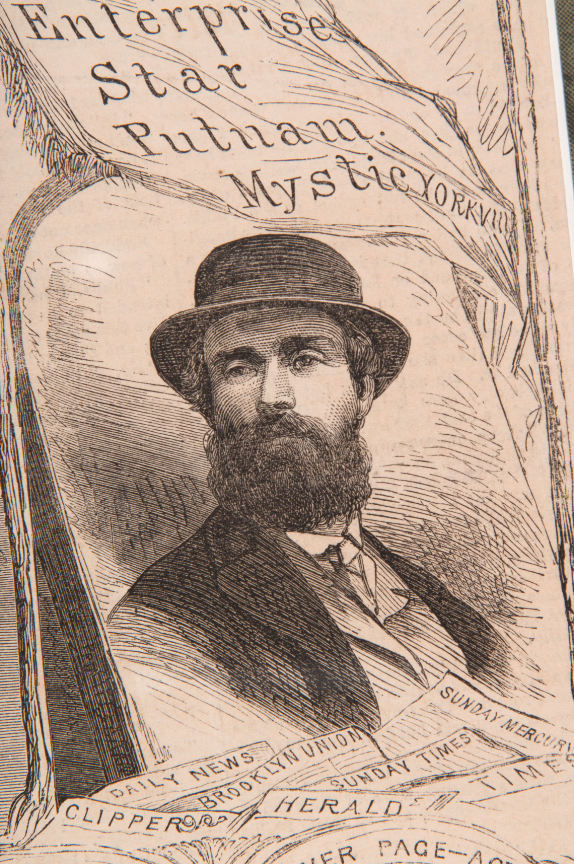
I actually have the entire publication that this woodcut came in, and stumbled upon this little gem of text confirming that it is in fact him! This is known to be the earliest depiction of him.
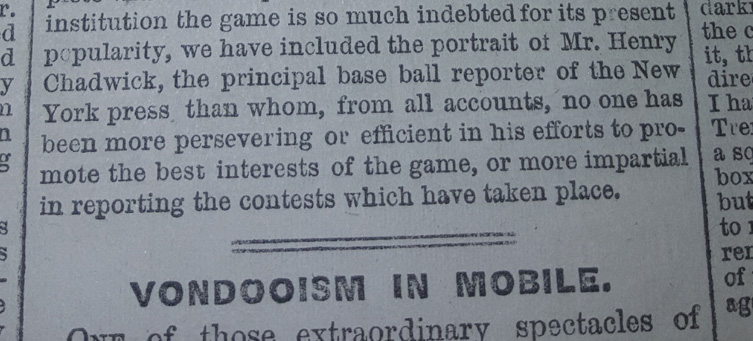
The last piece I wanted to show off is one that I thought would be an appropriate one to end my last article of the baseball season. You may have noticed all of the baseball players this year wearing this on their sleeves:
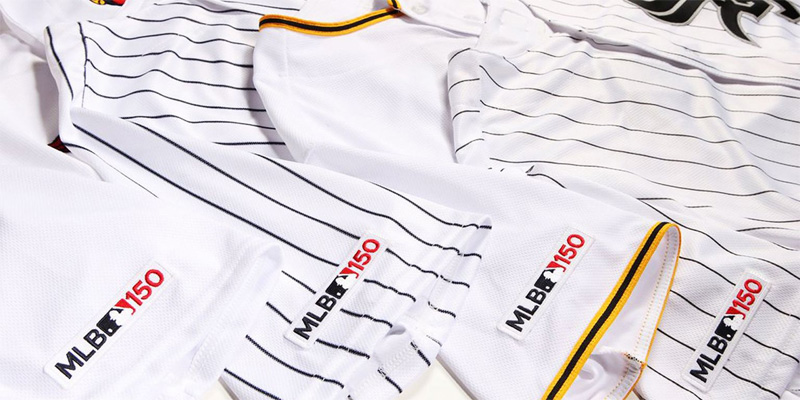
This is because 2019 marks the 150th year of professional baseball (1869-2019). Here is my woodcut of the first professional baseball team from 1869 – the Cincinnati Red Stocking Baseball Club.

There is a wealth of information on the internet about this team, and I highly recommend you looking them up!
Owning a tangible collectible such as a woodcut from historic teams and events from the 19th century is surreal. They look incredible as framed pieces – like they belong in a museum, and are relatively affordable, too! When I first found out about them, I thought they would be thousands of dollars each. As it turns out, many of them can be found for between $100-300 when they come up for sale, and in some cases, under $100!
I also wanted to try my hand at a mock up of Cap Anson … errr … Baby Anson … as a custom card using part of the woodcut as the relic. Having an authentic collectible piece of from the 1800s in a standard sized card is very appealing to me. Here is what I came up with:
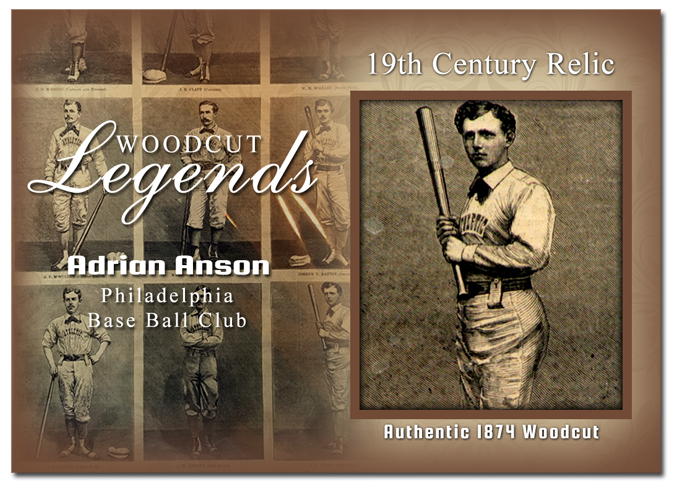
If you are interested in collecting woodcuts yourself, they do come up on eBay from time to time, plus, I have a few I’d be willing to let go of as well, if anyone is interested. If you do become a collector of 19th century woodcuts, I have a warning: you too, may fall in love with this period of our national pastime – a time before there were baseball cards.
BTW check out my new podcast – episode 1 talks more about these as well! https://anchor.fm/tan-man-baseball-fan/episodes/Before-there-were-Baseball-Cards—Night-Walk-Session-1-e6qo71

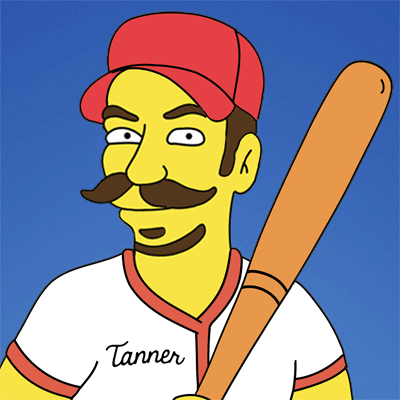

Leave A Comment
You must be logged in to post a comment.